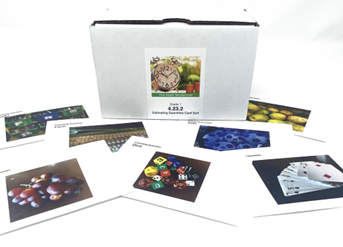A seismic shift is underway in mathematics education. Students around the United States are starting to use their voices more than ever to make sense of numbers, to reason about problems, and to build their mathematical language. They are exploring mathematics as something that is intuitive and collaborative. Students are building conceptual understanding and learning how to explain their thinking in drawings, numbers, and words. Procedural fluency is prioritized only when students have the conceptual depth to see how the procedures work. At the same time, schools are turning a greater focus on language acquisition for multilingual learners and students are being told that the words that they use to share their ideas are just fine to start. There’s no need for them to know the word denominator right off the bat. They need to know that fractional parts are equal in size and that their size is dependent upon the number of parts. Gone are the days of students memorizing the definition of a mathematical vocabulary word before they understand its meaning. This shift has been in the works for a while, and Illustrative Mathematics® is taking the Elementary math classroom by storm.
Exciting? Yes! But how do shifts in instructional approaches impact teachers?
In a perfect world, new curricula would emerge and teachers, a historically open-minded group of learners themselves, would embrace each one with a willingness to try to see if it is what is best for their students. The world of a teacher is far from perfect, though, and the cognitive, emotional, and time demands are ever increasing. Students are needing more support and teachers are taking on new demands from their administrations, school boards, parents, and students like never before. Teachers, for the most part, are operating in a time deficit every day.
What can be done?
As more and more teachers look to leave the profession, it is imperative that school communities examine how teachers are using their time. Resources need to be allocated to ensure that, whenever possible, time spent is focused on students. At The Math Modernist, we are making every effort to ensure that this exciting shift in mathematics instruction, which includes rich learning experiences for students, doesn’t lead to teacher burnout. We are doing the preparation work for teachers with our materials based on IM K-5 Math™.

Pre-Cut Card Decks and Printed Game Boards are ready-to-use. Teachers grab-and-go when it’s time to teach without having to calculate if the rich activity is worth the time it takes to prepare for it. They are motivated by pre-made materials and their students reap the benefit of a well-prepared teacher who was always willing and is now able to provide them with a meaningful, coherent learning path.

Albert Einstein once said, “I never teach my pupils, I only provide the conditions in which they can learn.” We agree and, along those same lines, at The Math Modernist we believe that we must also provide the conditions in which the teacher can teach.


